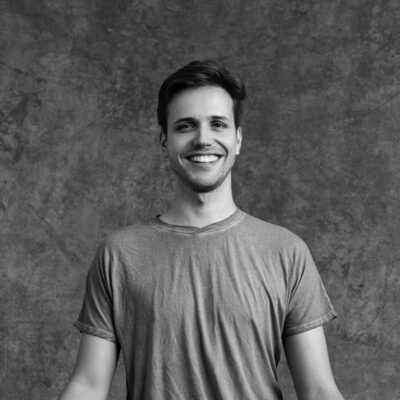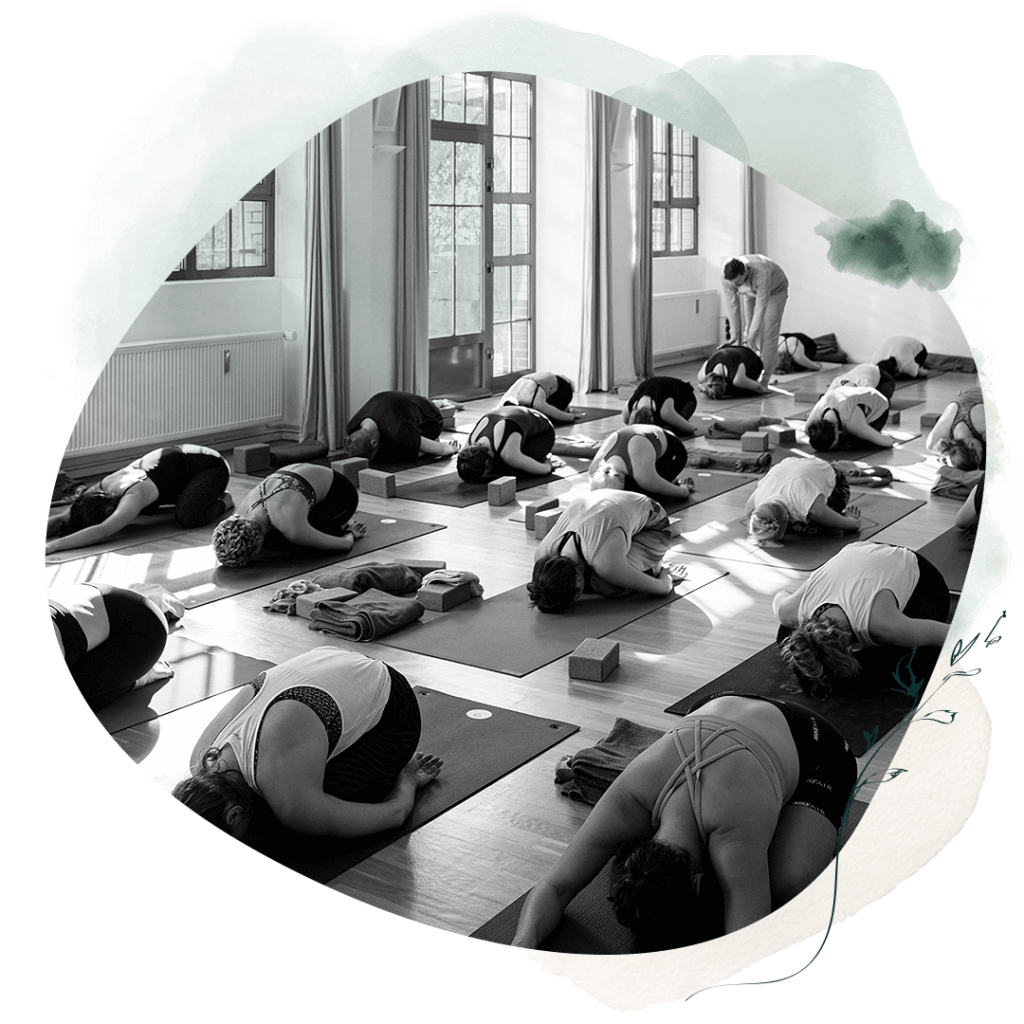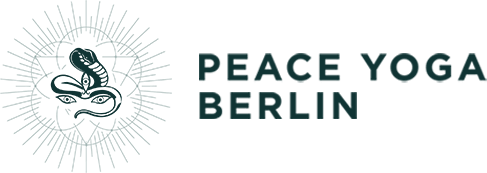Yoga for beginners
Authored: Moritz Ulrich | Reading time: 8 minutes | last edited: 18/08/2025
You want to work with Yoga but don't really know how? Wonderful. You're in exactly the right place. In this text I'll give you a Overview of the different yoga styleswhy you should do yoga at all and, above all, what you need to bear in mind. It can be quite confusing, especially at the beginning. Allow me to give you a little clarity here.
The most important facts in brief:
-
Holistic approach
Yoga not only includes physical exercises (asanas), but also breathing techniques, meditation, mantras and mindfulness. -
Health benefits
Regular yoga improves flexibility, relieves tension and strengthens mental balance - ideal for combating stress and improving body awareness. -
Entry & preparation
We recommend a non-slip yoga mat, comfortable clothing and arriving on time. It is best to start without any pressure to perform. -
Variety of styles
There are numerous yoga styles (e.g. Jivamukti, Iyengar, Vinyasa) that are suitable for beginners - trying them out will help you find the right style.
Why yoga? Advantages for beginners
Yoga is often equated with the so-called asanas, i.e. the individual Physical exercises. Yoga is much more than that. There is Breathing exercises, meditation, singing mantras and engaging with our mind. In many yoga classes, the asana practice will initially take centre stage and this brings a number of benefits. If you practise asana regularly, your body will become more supple overall and you will be able to build up strength evenly everywhere. At best, tension in the back, shoulders, neck and other areas of the body will be relieved.
You will also quickly notice changes on a mental level. You will notice how you can focus and concentrate better, especially in situations where there is a lot going on around you. Over time, you will be able to integrate the feeling of relaxation on the yoga mat into your everyday life.
First steps: Preparing for your first yoga beginners class
When you make your first Yoga class in a yoga studio, you probably don't need anything special. There should be yoga mats, blocks and straps on site if you need them. However, it is generally very advisable to bring your own Yoga mat to invest. This is more hygienic and you can use the mat that feels really good for you. I recommend a yoga mat made of natural rubber or polyurethane. Both are a little more expensive than the plastic ones, but are all the more slip-resistant. This is particularly useful for more strenuous yoga styles when you work up a sweat.
Your clothing also depends on your style of yoga. If it is sweaty, breathable sportswear that is not too loose is suitable so that it does not get in your way. If the yoga class is a little more relaxed, it makes sense to wear long, loose-fitting trousers and tops. You usually practise barefoot. This allows you to feel better and more direct contact with the earth.
Before your first Yoga class It is best to arrive 10 - 15 minutes before the start of the class to orientate yourself, perhaps ask any questions you may have and, above all, to find your place on the yoga mat in the yoga room in peace and quiet. Before a more strenuous asana practice, it is advisable not to eat anything heavy or drink too much two hours beforehand. This can sometimes be uncomfortable, especially when twisting the body or doing inversions such as the shoulder stand. During asana practice or breathing exercises, it is not necessarily advisable to drink anything. It is therefore best to make sure you have had enough to drink before your yoga class that day.
But above all, go into your first yoga class with joy and a sense of adventure. Try out different styles and experiment to see which suits you best. Let go of as many demands as possible to "be able" to do everything. It's more about practising and learning at your own pace.
Moritz Ulrich
I recommend yoga beginners to start with Jivamukti Yoga at Peace Yoga Berlin because they will get to know a holistic yoga practice and become part of a great community (still the best community for me) that is unique in Berlin.

Yoga for beginners in the studio: what to expect
Every yoga studio is organised slightly differently. It's best to enquire directly at the studio in advance so that you know what the process is like. At Peace Yoga Berlin, you register online for your yoga class, check in for your yoga class on site and then you can get changed in peace. We have all the equipment on site. The Jivamukti Basic yoga classes are particularly suitable for beginners, but you are also very welcome in all yoga classes.

In the basic classes, we look at various asanas in detail. The Jivamukti Open yoga classes are more dynamic and at the same time you will be able to take something away with you every time. They are truly open to all and we will always encourage you to practise your personal version of an asana or just watch for a moment. It's all part of the learning process. In these open yoga classes there are flowing sequences, meditation, deep relaxation, an inspiring soundtrack and perhaps also heart-opening Chanting.
A yoga studio lives from its community. If you have any questions, you can always ask the person teaching and the other people taking part in the yoga class. To make everyone feel comfortable, it is useful to have a few guidelines. At Peace Yoga Berlin we ask everyone to wear a top during the yoga practice. We ask for mutual consideration, e.g. to slide a little on your yoga mat to make room for someone else. You can take your mobile phone into the yoga room if necessary, but please switch it to silent and do not take videos or photos of others without asking them first.

Which style of yoga is suitable for beginners?
As already mentioned, there are different styles of yoga. These can be very different indeed. Some have a dynamic asana practice, some are very physically relaxing and others focus more on meditation and breathing exercises. All yoga styles are also suitable for beginners. The only important thing is that you attend yoga classes regularly and have a longer period. Anything new can be challenging at first. Take your time and stay on the ball, then you will be able to benefit from the effects of your yoga practice.
Jivamukti Yoga is a style of yoga that attempts to address all levels of body and mind and to integrate yoga philosophy into the yoga classes.
Here are some other examples:
- Iyengar Yoga emphasises precise alignment in the asanas and works more statically and even therapeutically.
- Hot Yoga is practised in an additionally heated room.
- Vinyasa Yoga is a name that can describe many different things. It usually refers to a yoga class in which the body is moved through flowing sequences.
- Kundalini Yoga according to Yogi Bhajan, differs from the others in that it emphasises individual, often longer, dynamic exercises and meditations.
None of the yoga styles is better than the other, so feel free to try a few and then stick with it for at least a few weeks!
Structure & tips for beginners for a regular yoga practice in everyday life
Our recommendation is to attend yoga classes in a studio two to three times a week. It is also worth establishing short practice sessions at home.
It's best to do this first thing in the morning after brushing your teeth. As a beginner, you may be very motivated and then take on too much. My tip would be to practise regularly for 10-15 minutes at home rather than trying to fit in 90 minutes every day.
The Jivamukti Yoga Magic Six is perfect for this. You can find them on YouTube here:
Common mistakes to avoid - what should you bear in mind when practising yoga for beginners?
If you want to try yoga for beginners, it's best to go into your first yoga class without any great expectations. Think of it like a new film at the cinema: you have an idea of what it's about, but you won't really know how it feels for you until it's over. The difference: yoga unfolds its positive effects primarily through Regularity.
After your first lesson, it's quite normal that you might feel a little Sore muscles especially if your body hasn't been active for a long time. Don't worry: you will become more flexible, stronger and more relaxed with every lesson.
It is important that you don't compare yourself to others when practising yoga. It's not about doing the most difficult posture perfectly. Your body and your breath will show you exactly where your personal limits are. Simply observe your breath: as long as you can breathe in and out calmly and evenly, you are within a healthy range. If your breathing becomes irregular, give yourself a break and find your comfortable rhythm again.
We wish you lots of fun with your first yoga experience - maybe soon in our studio.
If you feel like it, you can try Peace Yoga Berlin for 14 days for just €39!
Frequently asked questions about yoga for beginners:
Does Peace Yoga Berlin offer special introductory courses for beginners?
In principle, you can simply attend all courses. The Jivamukti Yoga Basic classes are particularly suitable for learning individual yoga exercises in detail. It is best to come to yoga classes 2 - 3 times a week to achieve the best effect.
How much does a yoga beginners' course in Berlin cost?
If you would like to try us out first, we have a wonderful Offer for you. For just €39, you can attend as many yoga classes as you like for 14 days.
Does Peace Yoga also offer beginners' courses in my area?
Our yoga classes take place in two great locations in Berlin Kreuzberg, which you can easily reach on foot, by bike or by public transport. One is near Paul - Lincke Ufer and the other is at Markthalle Neun. If you don't live in the neighbourhood, we have a Yoga beginners course for you, which you can complete online.

